Burden of Cardiovascular Diseases Attributable to Risk Factors in Portuguese-Speaking Countries: Data from the "Global Burden of Disease 2019" Study
- PMID: 35703642
- PMCID: PMC9345142
- DOI: 10.36660/abc.20210680
Burden of Cardiovascular Diseases Attributable to Risk Factors in Portuguese-Speaking Countries: Data from the "Global Burden of Disease 2019" Study
Abstract
Background: The impact of risk factors (RF) on morbidity and mortality from cardiovascular disease (CVD) for most Portuguese-speaking countries (PSC) is little known.
Objectives: We aimed to analyze the morbidity and mortality from CVD attributable to RF and its variation, from 1990 to 2019, in PSC, based on estimates from the Global Burden of Disease (GBD) 2019 study.
Methods: We evaluated changes in cardiovascular RF, mortality rates and age-standardized disability-adjusted life years (DALYs) between 1990 and 2019. The correlation between percentage changes in mortality rates and the sociodemographic index (SDI) of each PSC was evaluated by the Spearman method. A p-value <0.05 was considered statistically significant.
Results: Elevated systolic blood pressure (SBP) was the main RF for mortality and DALYs for CVD for all PSC. Mortality from CVD showed a downward trend in 2019, more accentuated in Portugal (-66.6%, 95%CI -71.0 - -61.2) and in Brazil (-49.8%, 95%CI -52.5 - -47.1). There was a trend towards an inverse correlation between SDI and the percent change in mortality, which was significant for dietary risks (r=-0.70, p=0.036), high LDL cholesterol (r=-0.77, p=0.015) and high SBP (r=-0.74, p=0.023).
Conclusions: In addition to SBP, dietary and metabolic RF justified a greater variation in the burden of CVD correlated with SDI in the PSC, suggesting the need to adopt health policies adapted to the reality of each country, aiming to reduce their impact on population.
Fundamento: O impacto dos fatores de risco (FR) sobre a morbimortalidade por doença cardiovascular (DCV) na maioria dos países de língua portuguesa (PLP) é pouco conhecido.
Objetivo: Analisar a morbimortalidade por DCV atribuível aos FR e sua variação nos PLP de 1990 a 2019, a partir de estimativas do estudo Global Burden of Disease (GBD) 2019.
Métodos: Avaliamos as mudanças nos FR ocorridas no período, as taxas de mortalidade e os anos de vida perdidos por incapacidade (DALYs), padronizados por idade, entre 1990 e 2019. Realizou-se a correlação entre a variação percentual das taxas de mortalidade e o índice sociodemográfico (SDI) de cada PLP pelo método de Spearman. O valor p<0,05 foi considerado estatisticamente significativo.
Resultados: A pressão arterial sistólica (PAS) elevada foi o principal fator de risco para mortalidade e DALY por DCV para todos os PLP. A mortalidade por DCV mostrou uma tendência de redução em 2019, maior em Portugal (-66,6%, IC95% -71,0 - -61,2) e no Brasil (-49,8%, IC95% -52,5 - -47,1). Observou-se tendência à correlação inversa entre SDI e a variação percentual da mortalidade, que foi significativa para os riscos dietéticos (r=-0,70, p=0,036), colesterol LDL elevado (r=-0,77, p=0,015) e PAS elevada (r=-0,74, p=0,023).
Conclusões: Além da PAS, os FR dietéticos e metabólicos justificaram uma maior variação da carga de DCV, correlacionada com o SDI nos PLP, sugerindo a necessidade de adoção de políticas de saúde adaptadas à realidade de cada país, visando a redução de seu impacto sobre a população.
Conflict of interest statement
Não há conflito com o presente artigo
Figures
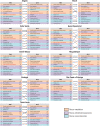
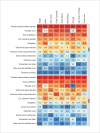



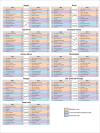
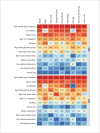
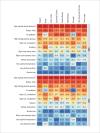

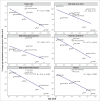
References
-
- World Health Organization. Global Action Plan for the Prevention and Control of NCDs 2013-2020. Geneva: WHO Library; 2013. Available from: http://www.who.int/nmh/events/ncd_action_plan/en/.
-
- Nascimento BR, Brant LCC, Yadgir S, Oliveira GMM, Roth G, Glenn SD, et al. Trends in Prevalence, Mortality, and Morbidity Associated with High Systolic Blood Pressure in Brazil from 1990 to 2017: Estimates from the “Global Burden of Disease 2017” (GBD 2017) Study. Popul Health Metr. 2020;18(Suppl 1):17. doi: 10.1186/s12963-020-00218-z. - PMC - PubMed
MeSH terms
LinkOut - more resources
Full Text Sources

